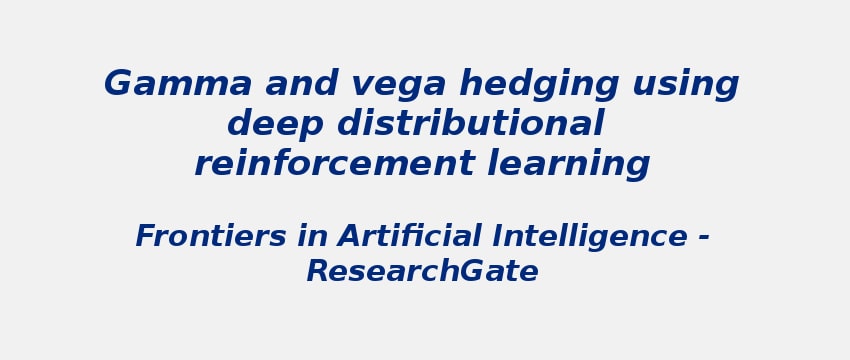Research Area: Machine Learning
We use deep distributional reinforcement learning (RL) to develop hedging strategies for a trader responsible for derivatives dependent on a particular underlying asset. The transaction costs associated with trading the underlying asset are usually quite small. Traders therefore tend to carry out delta hedging daily, or even more frequently, to ensure that the portfolio is almost completely insensitive to small movements in the assets price. Hedging the portfolios exposure to large asset price movements and volatility changes (gamma and vega hedging) is more expensive because this requires trades in derivatives, for which transaction costs are quite large. Our analysis takes account of these transaction cost differences. It shows how RL can be used to develop a strategy for using options to manage gamma and vega risk with three different objective functions. These objective functions involve a mean-variance trade-off, value at risk, and conditional value at risk. We illustrate how the optimal hedging strategy depends on the asset price process, the traders objective function, the level of transaction costs when options are traded, and the maturity of the options used for hedging.
Keywords:
Author(s) Name: Jay Cao, Jacky Chen, Soroush Farghadani, John Hul
Journal name: Frontiers in Artificial Intelligence
Conferrence name:
Publisher name: ResearchGate
DOI: 10.3389/frai.2023.1129370
Volume Information: Volume 6, (2023)
